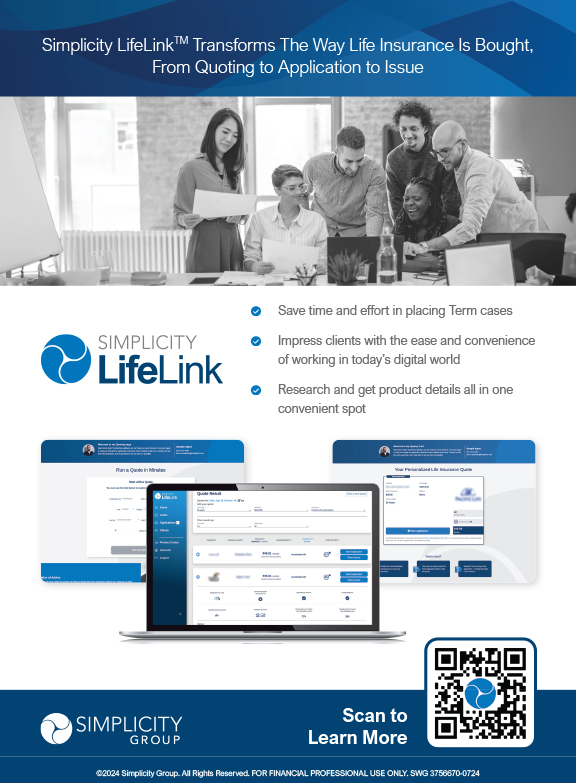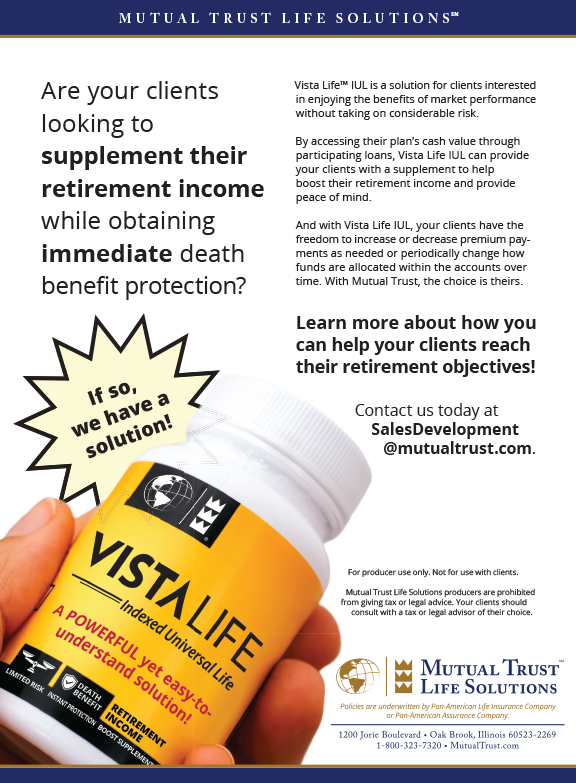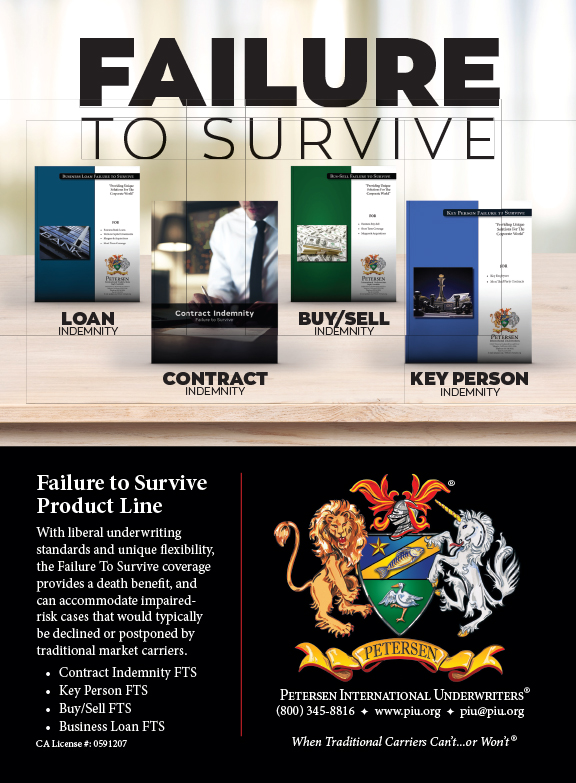In part one of the series, and in last month’s edition, we discussed how it is perceived that whole life insurance is very rigid because the structure of the base policy “generally“ requires the premium be paid for the duration that the product was designed for. But then I countered that argument by discussing the various nonforfeiture provisions, the most popular one being “reduced paid-up insurance,” at least for the cash accumulation sales. For instance, one of my favorite products is a “Pay to age-75” product. However, I will often do a “seven pay“ design where at the end of that seventh year we do a “reduced paid up policy” where no other premium is required. You can also have dividends pay premiums if dividends are robust enough. So again, the thought that whole life requires premium to be paid is false.
In this article I would like to discuss very briefly the various dividend options and have a more in-depth conversation around the fifth dividend option, Paid Up Additions. In article three we will discuss term riders for cash accumulation sales and then bring it all to a conclusion with a case design example.
First, what is a dividend in a whole life policy?
This is cash that is returned to the policyholder of a participating whole life policy whereas the policy holder has several options on what to do with that cash. The dividends are usually paid to the policyholder on an annual basis. Dividends represent the carrier having better experience than what was priced into the guaranteed components of the product. The three areas that can “outperform” the guaranteed components in the policy that generally make up a dividend payment are as follows: 1. Investment management. 2. Expense management. 3. Mortality experience.
Dividends are generally not guaranteed and therefore can generally be found in the non-guaranteed column of the whole life illustration. As said in the previous paragraph, a whole life policy has guaranteed provisions, but can also have non-guaranteed provisions like dividend assumptions. (Note: The guaranteed provisions in whole life are usually more robust than the guarantees in IUL. Hence, one of the reasons that one may prefer whole life over IUL.)
Dividend options:
- Cash: This is quite simply where the insurance company sends the client the check representing the dividend payment. Dividend payments are generally tax-free as long as they have not exceeded the cost basis in the policy.
- Premium reductions: It is possible that your policy gets to a point to where the dividends can pay the premium going forward. That would be while utilizing this option.
- Accumulate at interest: This is where your dividend stays with the insurance company and accumulates at a rate that the insurance company determines.
- Reduce an outstanding loan: If you have a loan against the policy, you can use the dividends to pay down all or a portion of that outstanding loan.
- Paid up additions: The big one. This is where we will spend a good chunk of the remaining article because the paid-up additions dividend option is what I illustrate about 99 percent of the time for our agents.
Paid up additions:
Paid up additions are not just a dividend option. This is also a rider you can choose where you can add premium above and beyond the base policy. That additional premium can purchase paid up additions. Usually, this dividend option along with allocating a large chunk of one’s premium payments to the PUA rider is what is done in high cash value cases. We will discuss more about product design in the third (of three) article.
Paid up additions are additional “slivers” of paid-up whole life insurance coverage on top of what you already have with the base policy. This is why when you look at the non-guaranteed side of the whole life illustration you will see the death benefit increasing year-by-year as the dividends purchase PUAs over time. Conversely, the guaranteed death benefit column does not increase. This is because the guaranteed side of the ledger typically does not include dividend payments. Alas, dividend payments are usually not guaranteed.
Although we discussed that PUAs increase the death benefit over time (without evidence of insurability by the way), that is not the main reason people love PUAs! They love PUAs because PUAs are like miniature single premium whole life policies. What that means is, the single premium design of PUAs beef up the overall cash value in the policy! Remember from our first article, the PUA lives by the same rules as the base policy whereas the cash value has to equal the death benefit by age 121 (usually). So, common sense would tell us that if we pay just one premium (PUA), that one premium had better start out as a higher cash value number than the “Pay to age 75” base policy. Afterall, the “Pay to age 75” base policy will have multiple premiums going in over time. As a matter of fact, the cash value as a percent of premium of a PUA payment is often 95 percent or so, depending on the client. Versus the base policy, which can commonly only have 15-25 percent of cash value in that first year relative to premium.
So then, can we just buy all PUAs and have the entire policy have immediate 95 percent of premium as cash value? No!
OK then, what percentage of our premium can we put into PUAs so that we have a cash value Machine? This will be our case study for the next article.


























